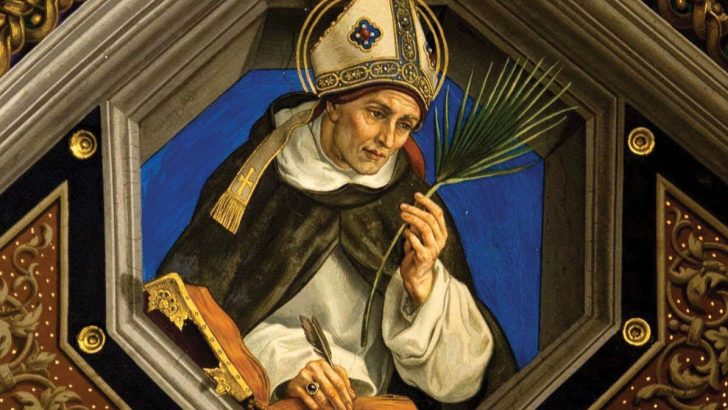Notebook
A few years ago I found myself in a pub – remember them? – for a friend’s engagement party. There I got chatting to a young doctor. We got chatting about our studies, and he was astonished to find out that I had studied science as an undergraduate yet somehow ended up a priest. As far as he was concerned, science and faith were mutually exclusive. In the history of the world, he thought, scientific thinking came to prominence only as faith receded, the one being based on rational thinking and the careful observation of nature, the other on the blind acceptance of authority.
Conversation
Our conversation was unfortunately cut short, so I didn’t have time to bore him with all the reasons he was completely mistaken. Instead I told him to look up the one figure who shows most brilliantly how science can flourish in the context of Christian faith: St Albert the Great.
Albert was a German Dominican who lived in the 13th Century, and he did all the things we might expect such a man to do: he preached and heard confessions, he taught Dominican students (including a young Thomas Aquinas), he got involved in the government of his order, he wrote works on prayer, the Eucharist, and the Bible. But alongside all this work, throughout his adult life, he was actively engaged in scientific discovery. Not only did he study books about animals, plants, rocks, and so on, he carefully tested the claims of authorities like Aristotle and Avicenna by making observations with his own eyes.
Albert had read somewhere, for example, that eels feed only on slime, but he writes in his work on animals that he has, with his own eyes, seen eels eat worms and fish, and even frogs. Similarly, he had been told by someone that ostriches eat iron, but he didn’t just accept this blindly, he tested it. On several occasions, he explains, he spread out bits of iron for ostriches to eat, but they didn’t go near it! (Where would a European like Albert have seen ostriches? In a zoo of course: many medieval kings had their own menageries of exotic animals.)
Creatures
Inanimate creatures too were of interest to Albert. He had read that rubies glow in the dark, and he confirms that he has indeed seen this happen with his own eyes. He had read about magnets, but he had also seen them in operation: “I myself have seen a magnet drawing iron to itself.”
Albert even went on field trips to examine the natural world more closely. He visited copper and gold mines to observe with his own eyes the appearance of these metals underground. He went on a marine biology field trip too: “I myself, as I set forth on the sea for the sake of gaining experience sailing to islands and beaches, have collected with my own hands eleven kinds of sea creatures.” He even describes being lowered down a cliff on a rope to observe the nesting habits of golden eagles. This terrifying experiment was repeated yearly for six years, to make sure that what was observed initially was not a mere fluke.
In St Albert’s work, then, we see the clear beginnings of the scientific method, perfectly at home in the life of a man of faith, at the heart of the Church. There is no contradiction, or even tension, between science and Christian faith. For Albert, first-hand observation of the natural world is simply a way of honouring the God whose goodness is manifested throughout creation, in copper and jellyfish, ostriches and magnets, eels and rubies.
Asking the experts
One of the fascinating aspects of Albert’s investigation of nature is the fact that he recognises the limits of his own observation, and relies then on “experts”. Albert uses that word not mainly to refer to men of the universities, but to people of all kinds who have long experience in a particular area. He recognises that the real experts in the behaviour of sheep, for example, are shepherds, so he talks to them to test certain ideas. He does the same with beaver hunters and falconers, testing the claims of authorities against their long experience. What he writes about metals too is partly based on conversations with miners and blacksmiths. And, perhaps most surprisingly, his treatise on embryology draws not only on books of natural philosophy and the opinions of medics, but also on the testimony of mothers themselves.


 St Albert the Great
St Albert the Great 